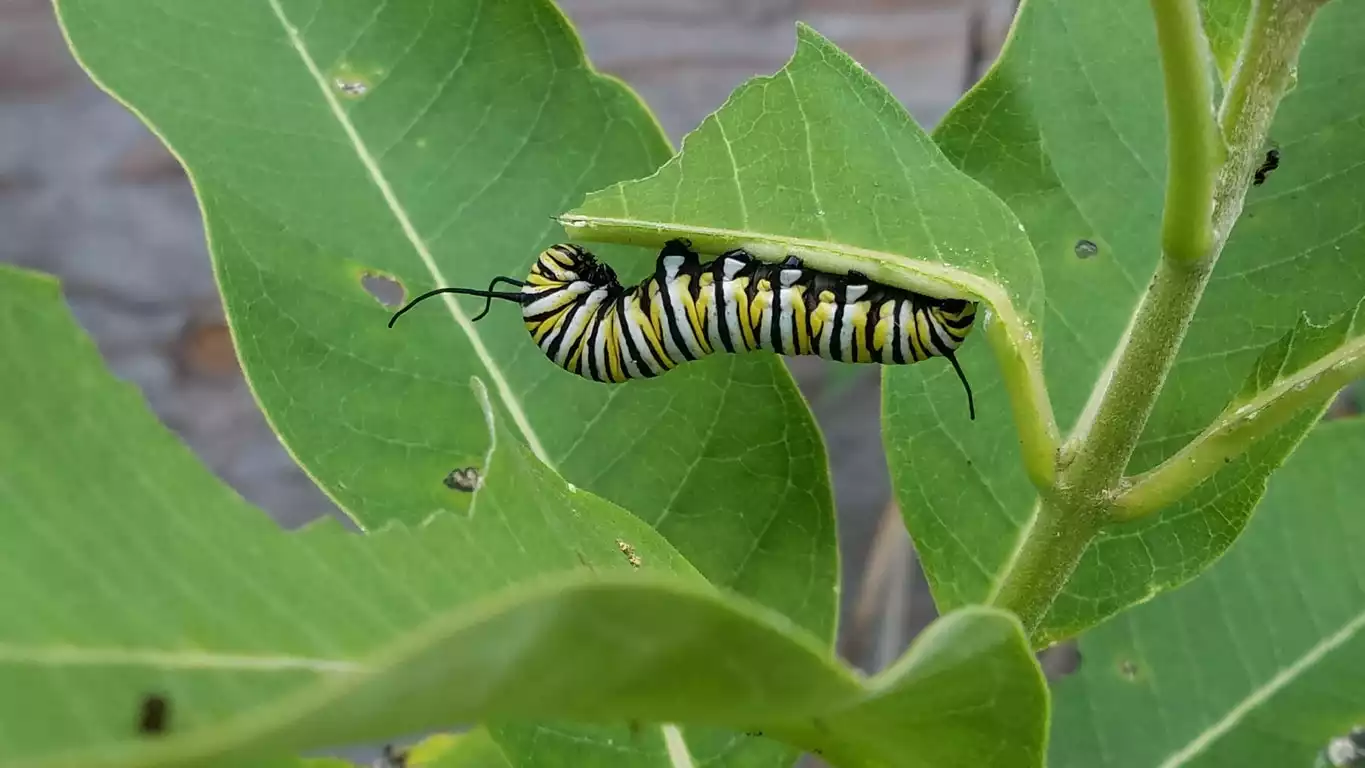Active Seasons
Caterpillars Appearance and Size Facts
Caterpillars, the larval stage of butterflies and moths, are fascinating creatures with diverse sizes and colors depending on the species. Caterpillars exhibit a wide array of appearances, ranging from the smallest moths with a 1/12-inch wingspan to the impressive almost 12-inch wingspans of some tropical butterfly and moth species.
Caterpillars come in various colors, from vibrant and bright hues to more subtle tones. Some caterpillars appear treacherous with long, curving, spiky horns projecting from their bodies, while others showcase unusual patterns and shapes. Their size varies greatly and is often dependent on the specific species, their stage of development, and the environment in which they live.
Distinguishing Caterpillars From Other Insects
Distinguishing caterpillars from other insects can be challenging due to their varying shapes and sizes. However, their characteristic larval stage, with its segmented body and distinctive prolegs, sets them apart. The specific features can vary, especially as they grow and develop their cocoon, making professional identification your best bet for accurate pest management.

Behavior and Habitat of Caterpillars
Caterpillars are voracious eaters during their growth stage, primarily consuming the leaves of flowering plants and trees. Their habitat largely depends on the specific species, but they often live in gardens, lawns, and other areas with vegetation.
The daily agenda of a caterpillar is simple: eat! They use their powerful jaws to munch on leaves and foliage, contributing to their rapid growth during the larval stage. Certain caterpillars possess hairs attached to poison sacs, and when they come into contact with a substrate like human skin, they can “sting,” leaving a painful and swollen area.

Signs of Infestation of Caterpillars
A clear sign of a caterpillar infestation is the presence of large holes in leaves or fruits. Watch for their cocoons, or chrysalises, hanging from plant stems elevated above the ground. Additionally, you may see mature caterpillars wandering across lawns, driveways, or sidewalks in search of a suitable place for pupation.

Tips for Prevention of Caterpillars
Even a single caterpillar can cause a disproportionate level of destruction to your garden, but there are steps you can take to limit their presence near your home:
- Use floating row covers over vegetable gardens.
- Rotate crop locations to prevent recurring infestations.
- Plant host-specific refuges for caterpillars.
- Handpick caterpillars with gloves when feasible.
Getting Rid of Caterpillars
For mild infestations, manually removing caterpillars from plants can be effective. A strong stream of water or insecticidal soaps and neem oil may also help control their population. But if you are dealing with multiple caterpillars or they are chewing away at your beloved plants, it is vital for the health of your garden, yard, and vegetation that you enlist professional pest control to remove them quickly before the damage spreads.
Effective Caterpillar Control Solutions
When facing a severe caterpillar infestation, professional pest control services, such as those offered by Hulett Environmental Services, provide tailored treatments to address the issue effectively. Our experienced technicians can assess the severity of the infestation and implement targeted solutions to protect your plants and property. Schedule your free inspection online, or just call Hulett for comprehensive pest management services.

